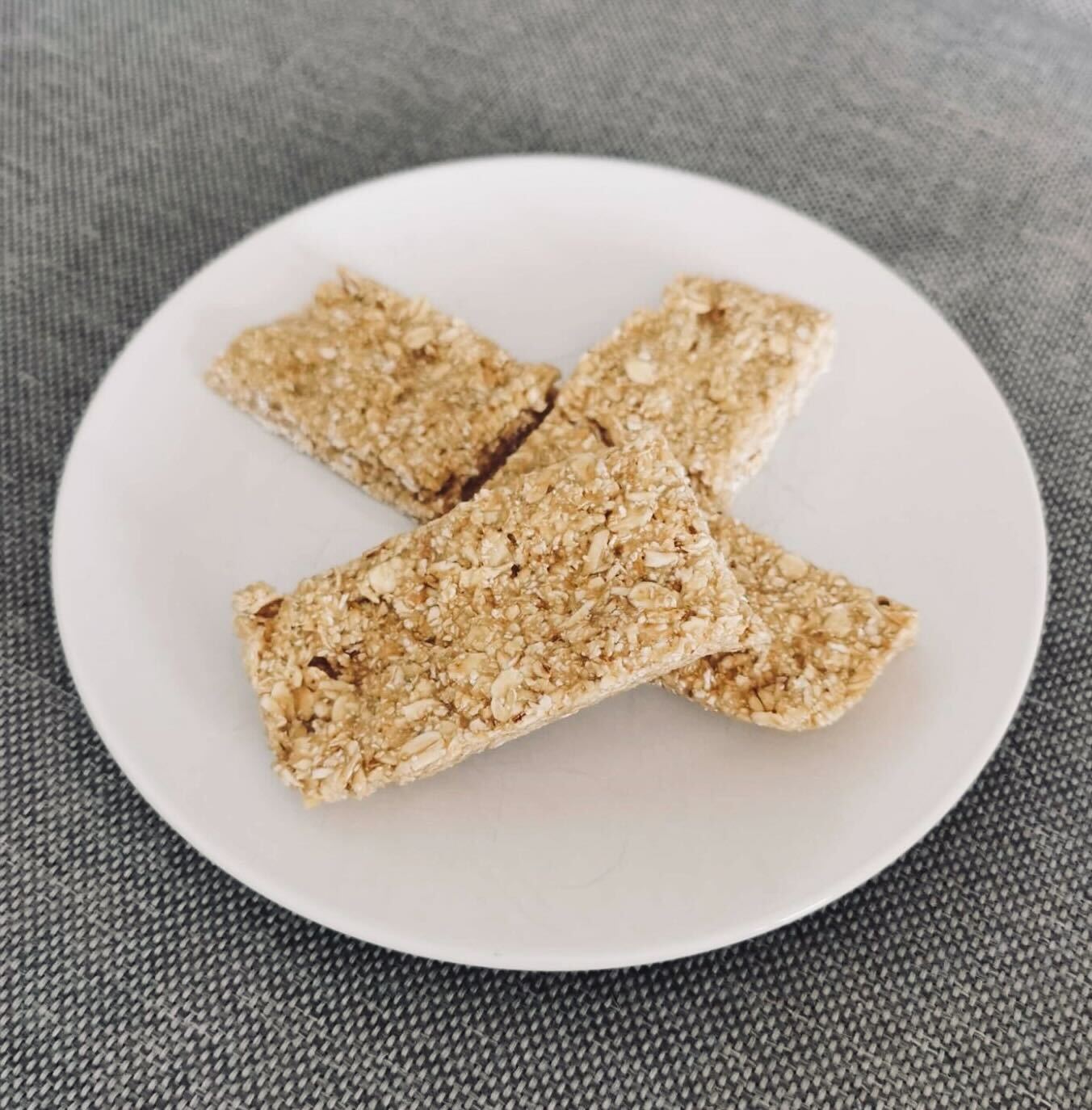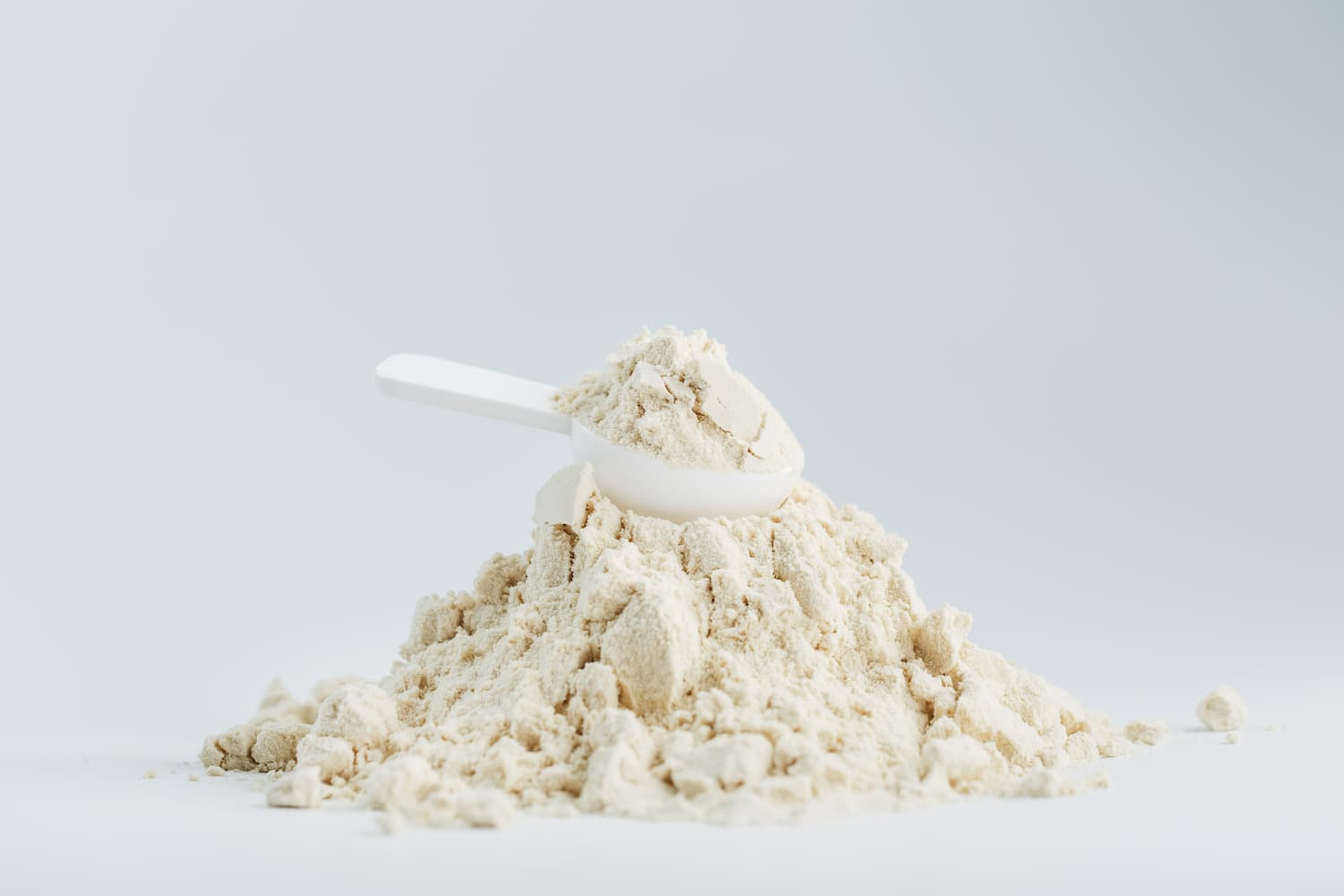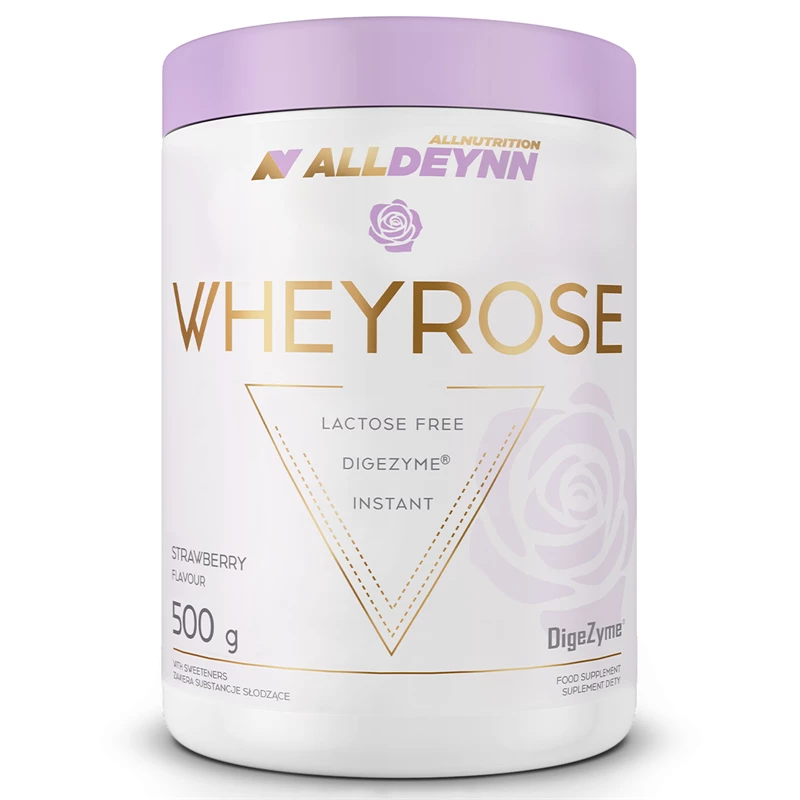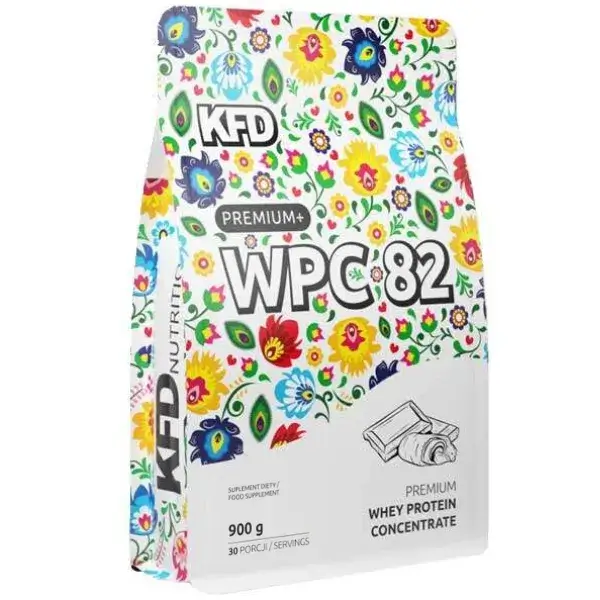WPC protein - whey protein concentrate. What is it?
WPC nutrient is often the first choice when looking for a protein for yourself. Is it worth using?


Learn more about our editorial process
.

Learn more about our editorial process
.

Learn more about our editorial process
.

Learn more about our editorial process
.
Why you can trust us
Articles on Natu.Care are written based on scientific research, data from government websites and other reliable sources. The texts are written in cooperation with doctors, nutritionists and other health and beauty experts. Articles are reviewed before publication and during significant updates.
.Learn more about our editorial process
.Information about advertisements
Content on Natu.Care may contain links to products from the sale of which we may receive a commission. When creating content, we adhere to high editorial standards and take care to be objective about the products discussed. The presence of affiliate links is not dictated by our partners, and we select the products we review ourselves completely independently.
.Learn more about our terms and Conditions
.The good old WPC. It's researched up and down the line, it's cheap and you can choose from a wide range of flavours. Concentrate shakes are enjoyed by both amateur weightlifters and old-timers with necks like Canadian sequoias.
>Maybe you are wondering which protein supplement to choose or want to try a different one - because someone in the changing room said: "WPI the best" and you are hesitant to really do protein as needed with all that WPC.
With nutritionist Kuba Pągowski, we're going to spill some proven info on WPC powder to keep your muscles growing and your conscience at ease.
From this article you will learn:
.- What is WPC.
- What is WPC?
- How it is formed and what properties it has. .
- What is WPC 80 vs 82.
- What is WPC 80 vs 82?
- Why do you need protein in your diet. .
- Who is WPC recommended for. .
- How to incorporate WPC into your meals. .
See also:
.- Whey Protein Isolate (WPI) .
- Whey protein hydrolysate (WPH) .
- Protein nutrient
- Vegetable protein
- Casein
- Creatine
- BCAA
- Citrulline
Protein in the body
.Protein makes up 20% of your mass and is one of the three most important macronutrients in your diet, along with carbohydrates and fats. Protein is like the building blocks for skin, hair, bone and muscleand.
In addition, proteinsand:
.- .
- are a source of energy, .
- promote tissue growth and repair, .
- are involved in the production of enzymes and hormones, .
- strengthen the immune system, .
- regulate metabolic processes (e.g. digestion), .
- transport various components in the body (e.g. oxygen to cells), .
The average adult of normal body weight should consume 0.8-1 g protein per kilogram of body weight. Physically active people need more, as much as 1.6-2.2 g per kilogram of body weightand.
Sometimes protein requirements are high or high-protein foods don't work for how many times can you alternate between chicken and cottage cheese? With help comes whey protein.
Whey protein - what is it?
.Whey proteins are a mixture of proteins that have been isolated from the liquid part of milk - whey - during cheese production. Whey proteins make up about 20% of the protein content of milk (the remaining 80% is casein). Their total content in all milk is about 0.7%and.
Whey protein types
.There are three types of whey proteinand.
- WPC, whey protein concentrate (30-82% protein).
- WPI, whey protein isolate (90-95% protein).
- WPI, whey protein isolate (90-95% protein).
- WPH, whey protein hydrolysate (90-100% protein).
Whey proteins vary in their degree of processing, protein, fat and carbohydrate content and price.
According to scientific studies, whey protein stimulates the formation of muscle mass to a greater extent than other protein sources - plant or beefand.
Protein nutrient WPC is the cheapest option, often chosen by beginners as well as advanced users. Let's take it under the microscope.
What is WPC?
.WPC ( Whey Protein Concentrate) is a whey protein concentrate containing 30 to 85% protein in 100g of dry weight. WPC protein supplements supplement dietary protein by providing, among other things, 9 essential amino acids that need to be obtained from food, such as leucine, isoleucine and valine, the popular BCAAsand.
.Whey protein concentrate never exceeds 10% lactose content, but can be an irritant for those with intolerance to this sugar. WPC has a very good bioavailability, which translates into efficient utilisation of the provided nutrients by the bodyand.
WPC nutrient is a good choice not only during mass gain when you are looking to build muscle, but also during reduction to minimise the loss of muscle tissue.
How is protein concentrate made?
.The WPC production process is divided into several stages:
.- Separation of whey from cheese. The milk is fermented, which causes the whey (the liquid part of the milk) to separate from the cheese.
- Filtration of the whey from the cheese.
- Filtration of the whey. The raw whey is filtered to remove lactose, fats and other components. This stage leaves about 80% protein and less than 10% lactose.
- Concentration.
- Concentration. After filtration, the water is evaporated, resulting in whey protein concentrate.
- Drying. Spraying the liquid in hot air yields whey protein powder.
- Further "fine-tuning". Depending on the manufacturer's requirements, flavourings or aromas may be added to the concentrate. .
Whey protein concentrate - what does it give you?
.WPC protein supplementand:
- supplements dietary protein, .
- supports the building of muscle mass, .
- supports post-workout recovery, .
- reduces muscle loss during a weight-loss diet, .
- increases the thermogenic effect of food (raises metabolism), .
- transports nutrients, .
- increases satiety after a meal, .
- influences the regulation of hormones, enzymes and antibodies, .
- improves nitrogen balance by providing the body with more amino acids.
Benefits of WPC
.- Most WPC supplements contain a minimum of 80% protein per 100g, allowing for an optimal amount of protein in 1 serving.
- Most WPC supplements contain a minimum of 80% protein per 100g, allowing for an optimal amount of protein in 1 serving.
- Costs less than WPI (isolate) and WPH (hydrolysate) - prices start at around £5 per 100g.
- Costs less than WPI (isolate) and WPH (hydrolysate) - prices start at around £5 per 100g.
- Contains 9 essential amino acids that the body does not produce on its own and you must supply them with food. .
- Digests and dissolves well. .
- Lots of flavours to choose from and is tastier than WPI and WPH. .
Disadvantages of WPC
.- Average 80% protein per 100g, which is less than WPI and WPH contain.
- Contains more fats and carbohydrates per 100g than competing solutions. .
- Has more kcal/100 g than WPI and WPH. .
- It takes 2-4 hours to digest, so it is not the best choice if you are looking for a quick post-workout protein boost. .
WPC 80 vs 82 - what's the point?
.Whey protein concentrates have different digital designations (e.g. WPC 80, WPC 82) denoting the percentage of protein in 100g of powder. So WPC 80 means that the dietary supplement has 80% protein, and WPC 82 means that it has 82% protein.
In practice there is no difference between WPC 80 and 82 - choose the cheaper ones..

Kuba Pągowski clinical dietitian
WPI or WPC protein
.Today's strong philosophers discuss between deadlift and hammer series about the superiority of one form of protein over another. Scientists squeeze in between them with their research.
There is no scientific evidence to suggest that either form of protein is more effective in performanceand. Both will provide you with protein and yes, don't worry, your muscles will grow. You just need to match your choice to your personal preferences, goals and expectations.
The following comparison of WPC and WPI will help you with your choice.
|
Features . |
White protein concentrate (WPC) . |
White protein isolate (WPI) | Protein isolate (WPI) |
|
|
Protein content per 100 g dry weight |
30-85% |
90-95% |
||
|
Ease of digestion |
Good |
Very good |
||
|
Digestion time |
2-4 hours |
30-60 minutes |
||
|
Price |
The cheaper choice (approx. £4.80-6.50 100g) |
|||
|
Solubility . |
Average |
High |
||
| High Content of carbohydrates and fats per 100 g dry weight |
3-8% carbohydrates, 2-6% fats, more lactose |
0-3% carbohydrates, 1-3% fats, less lactose |
||
|
Flavour |
It could be tastier - a matter of taste . |
May be slightly worse aftertaste - a matter of taste |
||
|
For whom . |
Beginners, advanced, no stomach problems, like to make recipes using WPC (blends well with foods) | Beginners, advanced, no stomach problems, like to make recipes using WPC (blends well with foods) | Beginners. |
People with lactose intolerance, beginners, advanced, people who want to quickly provide their body with protein after training |
WPC protein supplement is a better choice if:
- you want to save money, .
- you rely on a better tasting nutrient, .
- you like to make recipes using protein nutrients - WPC works great with. .
Hurr, durr, but after a workout you need to hit the anabolic window - you may have missed it.
Dietitian Kuba Pągowski explains:
.After weight training, the anabolic window lasts up to even 48 hours. You don't need to drink a protein shake and eat a banana immediately after training. Although in terms of carbohydrates, it's worth doing if you have a second workout on the same day..
 .
.
Kuba Pągowski clinical dietitian
And if you have a torn heart...
....you can buy protein supplements with a blend of WPC + WPI. They will provide you with protein, essential amino acids and will be assimilated at their own rate.
ALLDEYNN WHEYROSE
Product description
Protein supplement containing whey protein concentrate (WPC) with added digestive enzymesós. It digests well, is an easy and quick way to provide protein and can be consumed by people with lactose intolerance. It will work well not only as a stand-alone drinkóy but also as a tasty addition to shakesóy, dessertsóy, oatmeal or omeletóy.
WHEYROSE contains five digestive enzymes that help break down macromolecules into smaller components, so that the ingredients from food and the nutrient are absorbed even better. This minimises or even eliminates digestive discomfort. Such an addition is rare in protein supplements.
.Pros and cons
Protein supplement containing whey protein concentrate (WPC) with added digestive enzymesós. It digests well, is an easy and quick way to provide protein and can be consumed by people with lactose intolerance. It will work well not only as a stand-alone drinkóy but also as a tasty addition to shakesóy, dessertsóy, oatmeal or omeletóy.
WHEYROSE contains five digestive enzymes that help break down macromolecules into smaller components, so that the ingredients from food and the nutrient are absorbed even better. This minimises or even eliminates digestive discomfort. Such an addition is rare in protein supplements.
.Additional information
Protein supplement containing whey protein concentrate (WPC) with added digestive enzymesós. It digests well, is an easy and quick way to provide protein and can be consumed by people with lactose intolerance. It will work well not only as a stand-alone drinkóy but also as a tasty addition to shakesóy, dessertsóy, oatmeal or omeletóy.
WHEYROSE contains five digestive enzymes that help break down macromolecules into smaller components, so that the ingredients from food and the nutrient are absorbed even better. This minimises or even eliminates digestive discomfort. Such an addition is rare in protein supplements.
.User review
Protein supplement containing whey protein concentrate (WPC) with added digestive enzymesós. It digests well, is an easy and quick way to provide protein and can be consumed by people with lactose intolerance. It will work well not only as a stand-alone drinkóy but also as a tasty addition to shakesóy, dessertsóy, oatmeal or omeletóy.
WHEYROSE contains five digestive enzymes that help break down macromolecules into smaller components, so that the ingredients from food and the nutrient are absorbed even better. This minimises or even eliminates digestive discomfort. Such an addition is rare in protein supplements.
.ALLDEYNN VEGEROSE
Product description
A protein supplement made from five plant proteins enriched with acacia fibre, flaxseed, MCT oil and the probiotic-prebiotic complex LactoWise®. It is a synbiotic thatós stimulates the developmentóy and growth of beneficial bacteria in the gastrointestinal tract and shows a beneficial effect on the condition of the digestive system.
Pros and cons
A protein supplement made from five plant proteins enriched with acacia fibre, flaxseed, MCT oil and the probiotic-prebiotic complex LactoWise®. It is a synbiotic thatós stimulates the developmentóy and growth of beneficial bacteria in the gastrointestinal tract and shows a beneficial effect on the condition of the digestive system.
Additional information
A protein supplement made from five plant proteins enriched with acacia fibre, flaxseed, MCT oil and the probiotic-prebiotic complex LactoWise®. It is a synbiotic thatós stimulates the developmentóy and growth of beneficial bacteria in the gastrointestinal tract and shows a beneficial effect on the condition of the digestive system.
Expert opinion
A protein supplement made from five plant proteins enriched with acacia fibre, flaxseed, MCT oil and the probiotic-prebiotic complex LactoWise®. It is a synbiotic thatós stimulates the developmentóy and growth of beneficial bacteria in the gastrointestinal tract and shows a beneficial effect on the condition of the digestive system.
ALLDEYNN VEGEROSE
Product description
A protein supplement made from five plant proteins enriched with acacia fibre, flaxseed, MCT oil and the probiotic-prebiotic complex LactoWise®. It is a synbiotic thatós stimulates the developmentóy and growth of beneficial bacteria in the gastrointestinal tract and shows a beneficial effect on the condition of the digestive system.
Pros and cons
A protein supplement made from five plant proteins enriched with acacia fibre, flaxseed, MCT oil and the probiotic-prebiotic complex LactoWise®. It is a synbiotic thatós stimulates the developmentóy and growth of beneficial bacteria in the gastrointestinal tract and shows a beneficial effect on the condition of the digestive system.
Additional information
A protein supplement made from five plant proteins enriched with acacia fibre, flaxseed, MCT oil and the probiotic-prebiotic complex LactoWise®. It is a synbiotic thatós stimulates the developmentóy and growth of beneficial bacteria in the gastrointestinal tract and shows a beneficial effect on the condition of the digestive system.
Expert opinion
A protein supplement made from five plant proteins enriched with acacia fibre, flaxseed, MCT oil and the probiotic-prebiotic complex LactoWise®. It is a synbiotic thatós stimulates the developmentóy and growth of beneficial bacteria in the gastrointestinal tract and shows a beneficial effect on the condition of the digestive system.
Who is WPC for?
.WPC is recommended for people who:
- want to supplement protein in their diet, .
- they are aiming to gain muscle mass after weight training,
- they are on a diet of
- are on a reduction diet, .
- want to bump up the satiety of their meals, .
- like to experiment in the kitchen with protein supplements, .
WPC is suitable for everyone, whatever their goal - on mass it helps to build muscle, and on reduction it boosts satiety and prevents excessive loss of lean body mass.
In my opinion, the 'fashion' for WPC supplementation is a positive trend. Virtually everyone can benefit from it, because apart from the above benefits - Poles tend to consume too little calcium. Supplementing with one shake a day (a measure of WPC + a glass of milk) provides approximately 450 mg of calcium, which is practically 50% of the daily requirement for this extremely important mineral..
 .
.
Kuba Pągowski clinical dietitian
Contraindications
.Contraindications to whey protein concentrate (WPC) include: allergy to any component of the protein supplement, lactose intolerance and cow's milk protein allergiesand. People with acne should also be wary, as WPC can exacerbate skin problems .
A useful tip
.I know what it's like to buy, in a frenzy of promotions, a 2200g nutrient supplement with a new flavour... magnesia with lumps like pieces of exercise tape. If you don't know if WPC will taste good to you and if it's your fave, buy testers of 30g.
Side effects
.Consumption of whey protein concentrate (WPC) can cause for some: bloating, abdominal pain, nausea, vomiting, diarrhoea and gasand. People with lactose intolerance or who abuse WPC protein supplements are particularly prone to unpleasant discomfort.
Remember that the supply of protein throughout the day is most important. However, additional benefits (regular stimulation of muscle protein synthesis) can be given by distributing 25-40g of protein every 3-4 h..
 .
.
Kuba Pągowski clinical dietitian
Important
Scientific research suggests that excessive dietary protein intake can negatively affect kidney healthand. People with liver disease should also be wary, as excess protein may impair the function of this organand.
Eating large amounts of whey protein especially by seniors, people with or predisposed to kidney disease can further impede proper kidney function by increasing plasma urea content, urinary calcium excretion and urine volume. This overloads the urinary system and can lead to the formation of kidney stones..
 .
.
Witold Tomaszewskidoctor of medical sciences
.Can WPC cause acne?
.Yes, WPC nutrient can cause acne and other skin changes in some people. Whey protein has a high insulin index and affects IGF-1 levels - an important growth factor. Hormonal imbalances lead to increased sebum production, which can cause skin problemsand.
If my podiatrist has this problem, we usually change the protein source to a plant protein. Taste-wise, all kinds of vegan mixes work best..
 .
.
Kuba Pągowski clinical dietitian
How to use
.WPC protein supplements should be used in accordance with the manufacturer's recommendations and remember that it should not be the main source of protein in the diet, but only a supplement. WPC is best used by matching the daily portion to individual requirement, overall protein supply and time of day preferences.
In order for WPC to work and help you build or maintain muscle mass, it needs to be sensibly portioned throughout the day. So you're probably wondering...
.How much WPC per day?
.It is usual to use 1-3 servings of WPC per day (approximately 20g protein/portion), but this depends on the manufacturer's recommendations and the overall protein content of your diet. It is important to match the amount of protein from the supplement to individual requirements, i.e. in the case of people training, this is 1.6-2.2 g protein per kg of body weightand.
More protein=more muscle?
.I would love for this to be the case, but... no. It's not worth consuming cosmic amounts of protein. There will be no additional meat from it, and you risk putting a strain on your digestive system or kidneys.
WPC is not a substitute for a complete meal, yet your muscles also need carbohydrates, fats, water and a range of hormones to grow.
An excess of protein (>2.2g/kg body weight) in most people will not produce additional effects, instead we can use these calories for carbohydrates - to have strength for training..
 .
.
Kuba Pągowski clinical dietitian
Don't know how to adjust the amount underneath you
.Examples from the gym taken:
- Andrzej strength trains hard and accrues massages. He wants to gain muscle and complains that he walks sideways through doors. He is at a normal body weight of 80 kg. He should provide himself with 2.0 × 80 = 160g of protein. .
- His wife Alina, on the other hand, wants to reduce her body weight slightly - she relies mainly on cardio, but will squeeze if necessary. She is keen on post-meal satiety and muscle maintenance. She has a normal body weight of 65 kg and wants to lose up to 4 kg. She should provide herself with 1.8 × 65 = 117g of protein. .
Matching the amount of protein in your diet depends on many factors -your physique or weight goal, type of activity, supply of other macronutrients. Stick within the ranges given above and watch your body's reaction. It will let you know if there is enough protein. If in doubt, ask a nutritionist or personal trainer.
.Sometimes protein is sacrificed in favour of carbohydrates (e.g. in very physically active people), and sometimes protein is the key to sticking to your goals (e.g. on a reduction when satiety is involved).
See also: How much protein a day to eat?
When to take WPC protein?
.When is the best time to take a serving of WPC nutrition depends on your individual preferences. The time of day doesn't matter because the most important thing is to generally supply protein throughout the day and provide it in each meal at a minimum of 0.4 g/kg body weight.
When to take WPC protein?
Since we now know that the anabolic window lasts longer than claimed at the start, go home normally after training and eat a full meal.
A colleague said...
.Eating a protein supplement just before a workout can end unpleasantly. Sluggishness (protein satiates) can negatively affect the quality of your workout, and if you start with abdominals, may St. Arnold protect you...
See also: Protein before or after training?
Protein recipes with WPC
.Mmm, what a tasty nutrient with water - no one ever said. You can't always add milk, because of the macro and liquid calories (I know how it can be on #redu). And sometimes you've had enough even with milk. Incorporate nutrition cleverly into your meals.
Protein pancakes with good 'bacteria'
.35 g protein, 14 g fat, 60 g carbohydrate, approx. 470 kcal

Ingredients:
- kefir 1,5 % 120 g .
- wheat flour 50 g .
- an egg 50 g (1 piece m) .
- WPC protein - amount depending on manufacturer, in my case 30 g .
- favourite sweetener, in my case erythrol 10 g .
- baking powder 2 g (½ teaspoon) .
- peanut butter 15 g (1 tbsp) .
- canola oil 3 g (1 teaspoon) .
- favourite fruit, any quantity .
Make:
.Heat a pan (or two - there are a lot of pancakes), pour in the olive oil, spread with a paper towel. Mix all ingredients (except peanut butter and fruit) to a smooth paste. Spoon the mixture into the pan, forming patties. Fry approx. 3 minutes on one side, covered, until bubbles appear, then turn to the other side. Brush the finished pancakes with peanut butter.
.Easy protein bars
.1 piece has approximately 330 kcal, 18 g protein, 17 g fat, 86 g carbohydrate

Ingredients:
- flavoured milk/vegetable drink 125 g (half a glass) .
- peanut butter 30 g (2 tbsp) .
- honey 25 g (1 tbsp) .
- WPC protein 50 g .
- mountain oatmeal 220 g (2 cups) .
Mix peanut butter, milk, WPC and honey in a pot and heat for a while (do not boil). Grind the oatmeal to a fine dust and add to the mixture. Pour the mixture onto a baking tray or tin, smooth the surface and place in the fridge. After an hour, remove from the tin and divide into 4 parts.
.See also:
.Summary
.- WPC ( Whey Protein Concentrate) is a form of whey protein that contains 30-85% protein per 100g of dry weight.
- WPC contains 3-8% carbohydrates, 2-6% fats and more kcal per 100 g than competing solutions.
- WPC is suitable for everyone, regardless of training experience or physique goal. .
- WPC supplements are the cheapest types of protein powder and have many flavours to choose from. .
- Care for an overall protein supply in your diet, and treat protein concentrate as a supplement to your menu. .
- People who are physically active should consume between 1.6 and 2.2 g of protein per kg of body weight.
- It is recommended to consume approximately 0.4 g/kg body weight of protein at each meal. .
FAQ
.Is WPC protein harmful?
.WPC protein, like almost all foods, can be harmful if it is used in excess, is the only source of protein, or consumed against contraindications (e.g. lactose intolerance, kidney disease).
How much does WPC protein cost?
.WPC protein costs on average between £4.80 and £6.50 per 100g. The price of the protein depends on the pack size, flavour option and other additives (e.g. MCT oil, creatine, vitamins). It is usually more cost effective to buy larger packs. Flavoured protein can be a little more expensive.
Is it possible to take WPC protein during pregnancy?
.Yes, you can take WPC protein during pregnancy, but only if your pregnancy doctor gives 100% approval. Protein is important in pregnancy for mother and baby, but many dietary supplements with WPC may contain additional active ingredients that are not proven safe in pregnancy or are not recommended.
During pregnancy (and during breastfeeding), it is healthiest to provide the body with protein from food products (meat, eggs, fish, cottage cheese, high-protein cheeses).
Is WPC healthy?
.Yes, WPC ( Whey Protein Concentrate) is healthy as long as it is consumed in moderation and is not the main source of protein in your diet. WPC is a convenient form of protein supplementation in the body and a great source of essential amino acids, which is particularly important when building muscle mass. Flavoured protein is also a cool way to add variety and enrichment to your meal.
What's the difference between WPC 80 protein and 90 protein?
.The number given next to the name of WPC products indicates the percentage of protein in 100 g of dry matter. So, for example, WPC 80 contains 80% protein. There are no WPC 90 nutrients, as whey protein concentrates contain up to 85% protein. Products with 90% protein are WPI (isolate) or WPH (hydrolysate).
What is the difference between WPC and WPA?
.WPC ( Whey Protein Concentrate) is a whey protein concentrate containing 30-85% protein per 100g. WPA ( Whey Protein Acidophilus) combines whey protein with lactic acid Bacillus acidophilus, a probiotic often used to improve gut health and digestion.
Can WPC be cooked?
.Yes, WPC can be cooked, however, it is worth noting that when heated, whey proteins can become denatured, meaning their structure can change. But the same thing happens to the protein in chicken when you cook it. In the case of WPC, however, this should not significantly affect the overall nutritional value.
Does WPC protein nutrient contain sugar?
.Protein supplements often contain added sweetener (e.g. artificial or natural sweeteners) to make them tastier. A healthier choice is natural sweeteners e.g. stevia, erythritol, xylitol. It is rare to find pure white sugar in WPC supplements.
Where to buy WPC whey protein?
.You can buy WPC protein in stationary or online shops, as well as in some drugstores (Hebe) or shops (Biedronka). Choose tried and tested manufacturers and pay attention to whether the label has a description in Polish and the nutritional value given.
What is the best flavour of WPC?
.To start with, vanilla or chocolate flavour would be best, as they are the best refined and quite versatile for adding to other meals. If this is your first protein supplement, you will need to get used to the specific aftertaste. Therefore, it is better to test it on classic flavours like vanilla or chocolate, rather than being disappointed by the 'weird' taste of oreo or tiramisu.
Sources
.See all
.A Castro, L. H., S de Araújo, F. H., M Olimpio, M. Y., B de B Primo, R., T Pereira, T., F Lopes, L. A., B S de M Trindade, E., Fernandes, R., & A Oesterreich, S. (2019). Comparative Meta-Analysis of the Effect of Concentrated, Hydrolyzed, and Isolated Whey Protein Supplementation on Body Composition of Physical Activity Practitioners. Nutrients, 11(9), 2047. https://doi.org/10.3390/nu11092047
Arent, S. M., Cintineo, H. P., McFadden, B. A., Chandler, A. J., & Arent, M. A. (2020). Nutrient Timing: A Garage Door of Opportunity? Nutrients, 12(7), 1948. https://doi.org/10.3390/nu12071948
Cengiz, F. P., Cevirgen Cemil, B., Emiroglu, N., Gulsel Bahali, A., & Onsun, N. (2017). Acne located on the trunk, whey protein supplementation: Is there any association? Health Promotion Perspectives, 7(2), 106-108. https://doi.org/10.15171/hpp.2017.19
Cribb, P. J., Williams, A. D., Carey, M. F., & Hayes, A. (2006). The effect of whey isolate and resistance training on strength, body composition, and plasma glutamine. International Journal of Sport Nutrition and Exercise Metabolism, 16(5), 494-509. https://doi.org/10.1123/ijsnem.16.5.494
Dimski, D. S. (1994). Ammonia metabolism and the urea cycle: Function and clinical implications. Journal of Veterinary Internal Medicine, 8(2), 73-78. https://doi.org/10.1111/j.1939-1676.1994.tb03201.x
Gee, T. I., Woolrich, T. J., & Smith, M. F. (2019). Effectiveness of Whey Protein Hydrolysate and Milk-Based Formulated Drinks on Recovery of Strength and Power Following Acute Resistance Exercise. Journal of Human Kinetics, 68, 193-202. https://doi.org/10.2478/hukin-2019-0066
Gorissen, S. H. M., & Witard, O. C. (2018). Characterising the muscle anabolic potential of dairy, meat and plant-based protein sources in older adults. The Proceedings of the Nutrition Society, 77(1), 20-31. https://doi.org/10.1017/S002966511700194X
Hoffman, J. R., & Falvo, M. J. (2004). Protein - Which is Best? Journal of Sports Science & Medicine, 3(3), 118-130.
Holeček, M. (2018). Branched-chain amino acids in health and disease: Metabolism, alterations in blood plasma, and as supplements. Nutrition & Metabolism, 15, 33. https://doi.org/10.1186/s12986-018-0271-1
Jäger, R., Kerksick, C. M., Campbell, B. I., Cribb, P. J., Wells, S. D., Skwiat, T. M., Purpura, M., Ziegenfuss, T. N., Ferrando, A. A., Arent, S. M., Smith-Ryan, A. E., Stout, J. R., Arciero, P. J., Ormsbee, M. J., Taylor, L. W., Wilborn, C. D., Kalman, D. S., Kreider, R. B., Willoughby, D. S., ... Antonio, J. (2017). International Society of Sports Nutrition Position Stand: Protein and exercise. Journal of the International Society of Sports Nutrition, 14(1), 20. https://doi.org/10.1186/s12970-017-0177-8
Jarosz, Prof Dr n med M. (2020, December 3). Nutrition standards 2020. National Centre for Nutrition Education. https://ncez.pzh.gov.pl/abc-zywienia/normy-zywienia-2020/
Jeewanthi, R. K. C., Lee, N.-K., & Paik, H.-D. (2015). Improved Functional Characteristics of Whey Protein Hydrolysates in Food Industry. Korean Journal for Food Science of Animal Resources, 35(3), 350-359. https://doi.org/10.5851/kosfa.2015.35.3.350
Kim, C.-B., Park, J.-H., Park, H.-S., Kim, H.-J., & Park, J.-J. (2023). Effects of Whey Protein Supplement on 4-Week Resistance Exercise-Induced Improvements in Muscle Mass and Isokinetic Muscular Function under Dietary Control. Nutrients, 15(4), 1003. https://doi.org/10.3390/nu15041003
Krieger, J. W., Sitren, H. S., Daniels, M. J., & Langkamp-Henken, B. (2006). Effects of variation in protein and carbohydrate intake on body mass and composition during energy restriction: A meta-regression 1. The American Journal of Clinical Nutrition, 83(2), 260-274. https://doi.org/10.1093/ajcn/83.2.260
Layman, D. K., Lönnerdal, B., & Fernstrom, J. D. (2018). Applications for α-lactalbumin in human nutrition. Nutrition Reviews, 76(6), 444-460. https://doi.org/10.1093/nutrit/nuy004
Lonnie, M., Hooker, E., Brunstrom, J. M., Corfe, B. M., Green, M. A., Watson, A. W., Williams, E. A., Stevenson, E. J., Penson, S., & Johnstone, A. M. (2018). Protein for Life: Review of Optimal Protein Intake, Sustainable Dietary Sources and the Effect on Appetite in Ageing Adults. Nutrients, 10(3), 360. https://doi.org/10.3390/nu10030360
Naclerio, F., & Larumbe-Zabala, E. (2016). Effects of Whey Protein Alone or as Part of a Multi-ingredient Formulation on Strength, Fat-Free Mass, or Lean Body Mass in Resistance-Trained Individuals: A Meta-analysis. Sports Medicine (Auckland, N.Z.), 46(1), 125–137. https://doi.org/10.1007/s40279-015-0403-y
Nguyen, D. L., & Morgan, T. (2014). Protein restriction in hepatic encephalopathy is appropriate for selected patients: A point of view. Hepatology international, 8(2), 447-451. https://doi.org/10.1007/s12072-013-9497-1
Noakes, M., Keogh, J. B., Foster, P. R., & Clifton, P. M. (2005). Effect of an energy-restricted, high-protein, low-fat diet relative to a conventional high-carbohydrate, low-fat diet on weight loss, body composition, nutritional status, and markers of cardiovascular health in obese women. The American Journal of Clinical Nutrition, 81(6), 1298-1306. https://doi.org/10.1093/ajcn/81.6.1298
Pal, S., Ellis, V., & Dhaliwal, S. (2010). Effects of whey protein isolate on body composition, lipids, insulin and glucose in overweight and obese individuals. The British Journal of Nutrition, 104(5), 716-723. https://doi.org/10.1017/S0007114510000991
Shawcross, D. L., & Wendon, J. A. (2012). The neurological manifestations of acute liver failure. Neurochemistry International, 60(7), 662-671. https://doi.org/10.1016/j.neuint.2011.10.006
Schoenfeld, B. J., & Aragon, A. A. (2018). How much protein can the body use in a single meal for muscle-building? Implications for daily protein distribution. Journal of the International Society of Sports Nutrition, 15, 10. https://doi.org/10.1186/s12970-018-0215-1
Silverberg, N. B. (2012). Whey protein precipitating moderate to severe acne flares in 5 teenaged athletes. Cutis, 90(2), 70-72.
Simonart, T. (2012). Acne and whey protein supplementation among bodybuilders. Dermatology (Basel, Switzerland), 225(3), 256-258. https://doi.org/10.1159/000345102
Veldhorst, M. A. B., Nieuwenhuizen, A. G., Hochstenbach-Waelen, A., van Vught, A. J. A. H., Westerterp, K. R., Engelen, M. P. K. J., Brummer, R.-J. M., Deutz, N. E. P., & Westerterp-Plantenga, M. S. (2009). Dose-dependent satiating effect of whey relative to casein or soy. Physiology & Behavior, 96(4-5), 675-682. https://doi.org/10.1016/j.physbeh.2009.01.004
Wilt, T. J., Shaukat, A., Shamliyan, T., Taylor, B. C., MacDonald, R., Tacklind, J., Rutks, I., Schwarzenberg, S. J., Kane, R. L., & Levitt, M. (2010). Results. In Lactose Intolerance and Health. Agency for Healthcare Research and Quality (US). https://www.ncbi.nlm.nih.gov/books/NBK44624/
.West, D. W. D., Abou Sawan, S., Mazzulla, M., Williamson, E., & Moore, D. R. (2017). Whey Protein Supplementation Enhances Whole Body Protein Metabolism and Performance Recovery after Resistance Exercise: A Double-Blind Crossover Study. Nutrients, 9(7), 735. https://doi.org/10.3390/nu9070735
Wolfe, R. R. (2015). Update on protein intake: Importance of milk proteins for health status of the elderly. Nutrition Reviews, 73(Suppl 1), 41-47. https://doi.org/10.1093/nutrit/nuv021
Wu, G. (2016). Dietary protein intake and human health. Food & Function, 7(3), 1251-1265. https://doi.org/10.1039/c5fo01530h
Zamil, D. H., Perez-Sanchez, A., & Katta, R. (2020). Acne related to dietary supplements. Dermatology Online Journal, 26(8), 13030/qt9rp7t2p2.
Editorials
Meet the team



Vegan protein supplements add protein to the diets of athletes and non-athletes alike.

Look after the protein in your diet whether you are on a weight gain, weight reduction or weight maintenance.

Methionine is a little-known amino acid that is responsible for many functions in the body.



